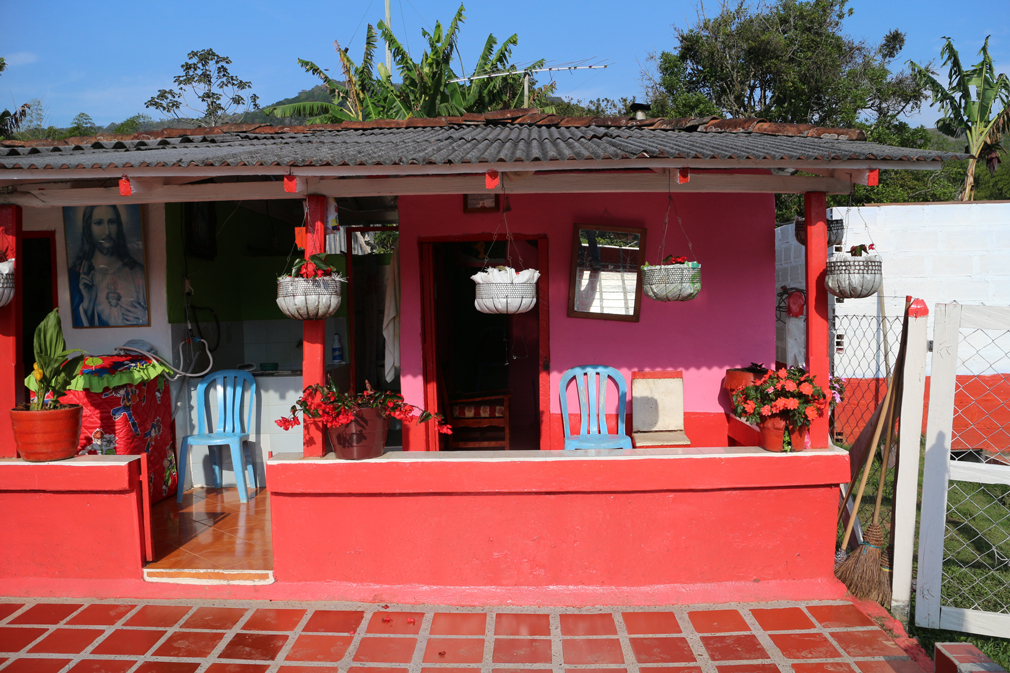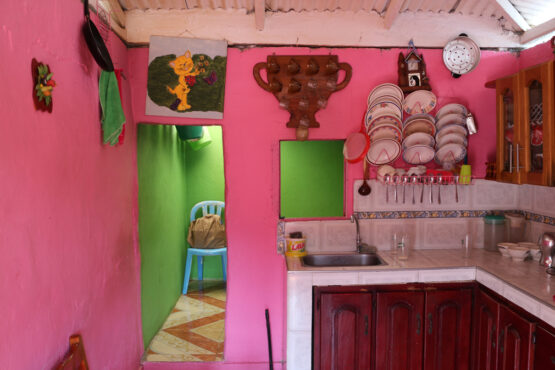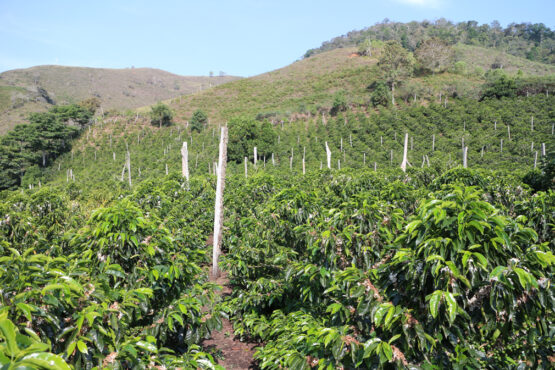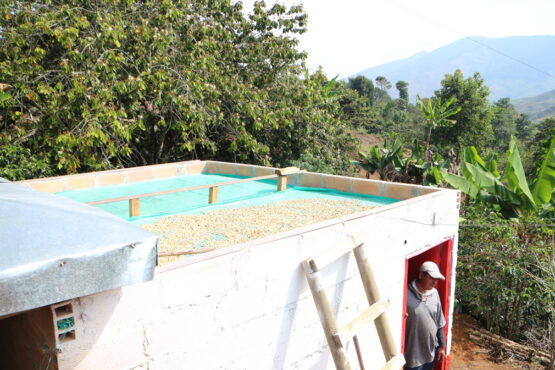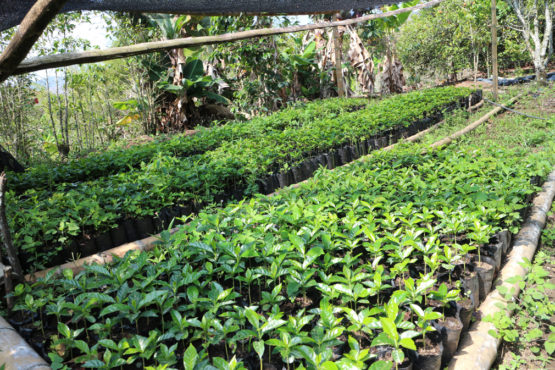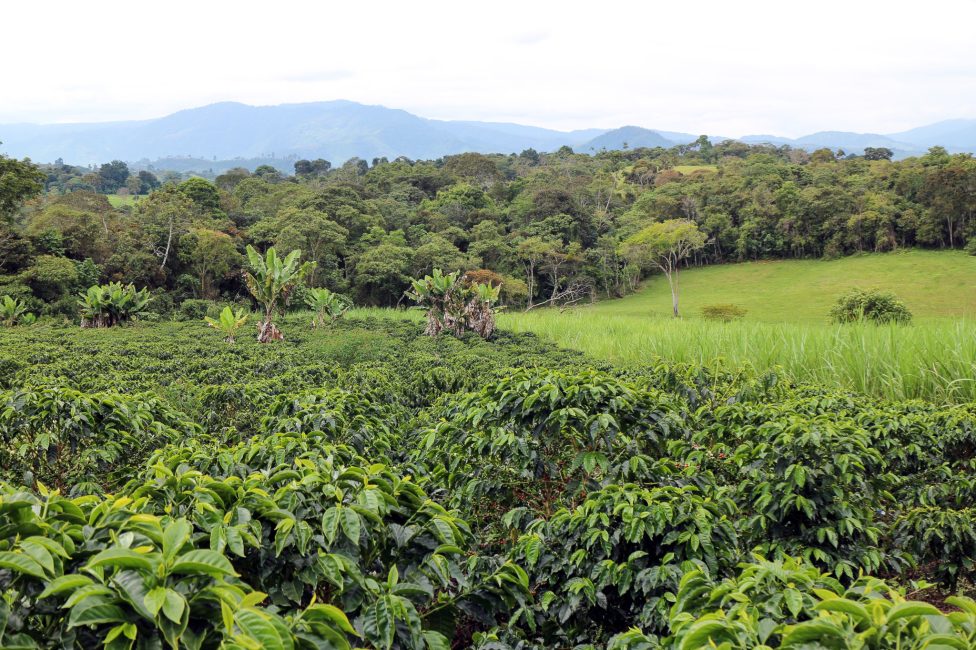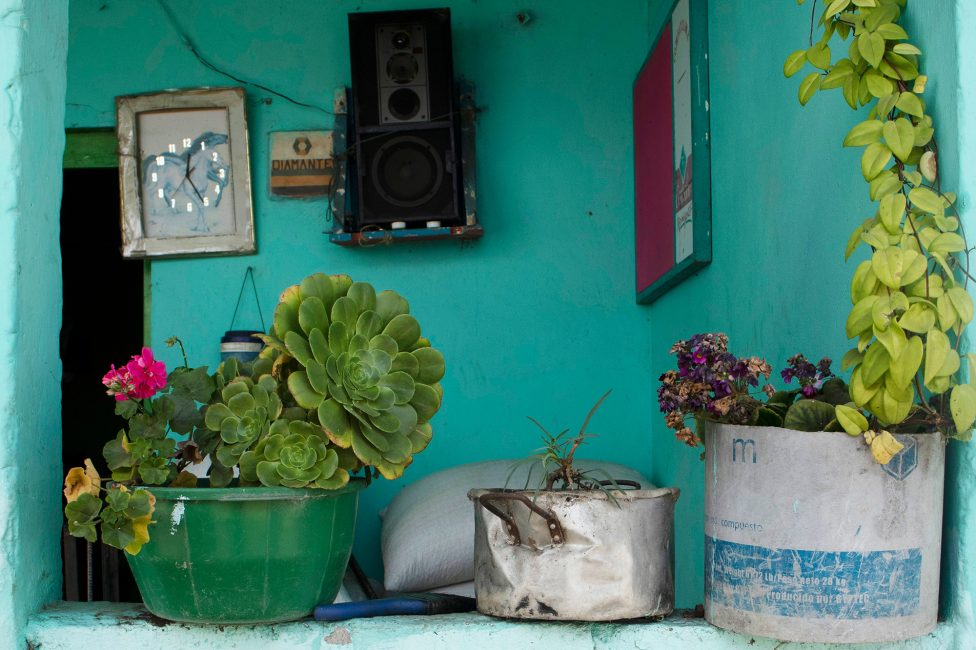La Estrella
Distinct and complex. Raspberry, apricot and mango, with honey sweetness and vibrant white blossom florals.
This 100% Chiroso variety micro-lot was produced by John Bermudez Alexander and his family on their 1.5-hectare farm, La Estrella (meaning “star”), in the small community of Urrao, located in the municipality of Caicedo, in the state of Antioquia, Colombia.
Finca La Estrella is located at a staggering 2,000m above sea level, in the rolling green hills surrounding Urrao, a unique coffee producing region in the valley of the Rio Penderisco. Along with his wife, Genny Juliana Tabares, and their eldest daughter, John does the majority of the work on the farm, only hiring members of the local community to help out during the busy harvest season. This gives the family great oversight on the farming and processing of the coffee, and allows them to be very meticulous and specialty-focused. John has prioritised quality over volume by investing the premiums he makes on the coffee into building and improving infrastructure at their micro-beneficio (wet mill), over planting more trees. The family is determined to grow the farm at a slow and steady pace, without ever sacrificing quality.
John has been growing the Chiroso variety for a couple of years after it was recommended to him by his sister Marbe Luz, who owns a nearby farm with her husband. They were some of the first farmers in the area to recognise the potential of this newly identified variety. Chiroso was initially planted in Urrao as it is well-suited to the cooler temperatures of the region and has higher productivity than its alternative, Caturra. It has since been recognised for its unique and complex cup characteristics and is becoming more sought after by specialty buyers. Recent DNA studies done on the variety have shown Chiroso to be an Ethiopian landrace variety (similar to the famous Gesha variety), though it is still unclear how it ended up in Antioquia, Colombia.
ABOUT URRAO
Urrao is a unique and special coffee-growing region, located in the valley of Rio Penderisco, at around 1900m above sea level. Unlike other producing regions in Colombia, which are characterised by deep canyons and massive, rugged mountains, Urrao is covered in rolling green hills, calm pastures and beautiful rivers that snake through the landscape. This geography guarantees cool temperatures year-round, typically only reaching between 12-25 degrees. This cool climate is ideal for the slow ripening of coffee cherries, leading to denser beans and a sweeter, more complex cup profile.
Until recently, Urrao was overlooked as a coffee-producing region and dismissed by many as being too cold for good production. There is still very little coffee produced in the area, despite it being some of the most fertile land in Antioquia. Many farmers complement the income they make from coffee by growing Lulu, a type of passionfruit that tastes similar to a kiwi fruit and that is incredibly popular in Colombia. Coffee grown in Urrao is slowly becoming recognised and sought after for its high-quality and complexity.
Farms in Urrao are very small – averaging just 1.5 hectares – and are traditionally farmed. Fertilisation occurs around three times a year, usually after manual weeding, and pesticides are rarely used. The coffee is selectively hand-harvested, with most labour being provided by the farmers and their families.
ABOUT ANTIOQUIA
Antioquia is located in central northwestern Colombia. Coffee was introduced to the region in the latter part of the 19thcentury. Since then, this mountainous, fertile department has 128,000 hectares of coffee that is produced by a mix of large estates and tiny farms.
Antioquia only recently became more accessible to specialty coffee buyers – largely thanks to a transformation of the department led by Sergio Fajardo, who was the governor of the department between 2012-2016. Sergio transformed Antioquia’s capital city, Medellín, from a violent and dangerous place to a world-class tourist destination with a strong economy. Coffee has played a significant role in this this transformation, and as access to many producers has improved, the region has become one of Colombia’s most important and celebrated coffee-producing areas.
Our export partners for this coffee, Pergamino, have worked hard commercialise specialty-grade coffee throughout Antioquia, and have uncovered some stunning coffees and very dedicated producers in the process. They work closely with the producers to give them feedback on their coffees (provided by Pergamino’s expert team of cuppers) and provide top up payments when the coffee is sold at a higher premium.
Head here to learn more about the work of Pergamino in Colombia.
HOW THIS COFFEE WAS PROCESSED
This coffee was selectively hand-harvested, with most labour being provided by John Alexander and his family. The coffee was processed using the washed method at La Estrella’s ‘micro-beneficio’ (mill).
The coffee was then hand pulped and placed into a fermentation tank. Because of the cooler climate in Urrao, producers like John Alexander tend to ferment the coffees for longer than usual and will often blend several days’ worth of pickings over a 3-5 day period. Every day freshly picked cherry is pulped and added to the mix. This is key, as it lowers the pH level and – along with the cooler temperatures – allows for an extended fermentation process. This fermentation process contributes to a vibrant, winey acidity in the coffee’s cup profile.
The coffee was then carefully dried (over 10–18 days) on a patio. Once dry, the coffee was delivered to Pergamino’s warehouse, where it was cupped and graded, and then rested in parchment until it was ready for export.
